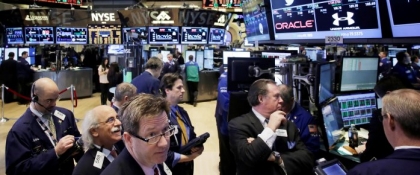By Nick Cunningham
The oil market is heading towards rebalancing this year, most analysts seem to think, with OPEC+ production cuts, combined with a potential slowdown in U.S. shale eating away at the surplus. However, the “rebalancing” all hinges on the steady demand growth projections that most analysts have at the heart of their forecasts. On that front, we just got another dose of bad news.
On Monday, the International Monetary Fund (IMF) lowered its economic growth forecast and seemed to sound the alarm bells regarding the health of the global economy. “While global growth in 2018 remained close to postcrisis highs, the global expansion is weakening and at a rate that is somewhat faster than expected,” Gita Gopinath, the Economic Counsellor and Director of Research at the IMF, said in a commentary on January 21.
The IMF only downgraded its growth estimate by 0.2 percent, down to 3.5 percent for 2019, but pointed out that “the risks to more significant downward corrections are rising.” These risks include escalating trade tensions and trade uncertainty, the possibility of a sharper slowdown in China, and a resulting selloff in commodity markets. Also, budget fights in Europe, the Brexit saga and the ongoing government shutdown in the U.S. also present uncertainties.
These risks are layered on top of existing economic headwinds, which include weakness in the Eurozone, an “unwinding of fiscal stimulus” in the U.S., and crucially, higher interest rates and a strong dollar because of interest rate hikes.
“Trade and investment have slowed, industrial production outside the United States has decelerated, and purchasing managers’ indices have weakened, flagging softening momentum,” the IMF said. “While this does not mean we are staring at a major downturn—it is important to take stock of the many rising risks.”
Meanwhile, the head of the European Central Bank, Mario Draghi, also came out and voiced concern, echoing the comments of the IMF. Draghi said that growth risks “have moved to the downside.” That is a deterioration in his language; in December he said risks were “broadly balanced.”
Among all of these problems, it could be the fate of the Chinese economy that proves the most pivotal. Credit growth in China “has continued to decelerate, despite nine months of significant central bank easing,” the Wall Street Journal reported. “If it doesn’t turn back up soon, producer-price inflation could turn negative—causing big problems in the heavily indebted industrial sector.”
That is the latest in a string of poor economic news from China recently. In December, both China’s exports and imports declined from a year earlier, a worrying sign of a brewing slowdown. Also, China’s passenger-vehicle sales fell for the full year in 2018 compared to a year earlier, the first time that has occurred in nearly three decades. Car sales could fall again this year. In fact, China’s GDP expanded by just 6.6 percent, which may look enviable to most countries, but is the weakest increase for China since 1990.
China’s appetite for fuel is also slowing. According to Nomura, gasoline demand in China may only grow by 0.5 percent this year, down sharply from a 4 percent increase in 2018.
The fate of the Chinese economy has outsized importance for the global economy as a whole. As John Kemp of Reuters points out, the difference between a return to strong global growth and an economic recession translates into several hundred thousand barrels per day of oil demand. And because oil prices are really determined at the margins, this difference has the potential to produce vastly difference price trajectories. A return to growth would likely send crude prices back up, while a recession would do the opposite. That may be stating the obvious, but as Kemp puts it, what happens with the economy could “[dwarf] all other influences on oil prices in 2019.”
Source: Oilprice.com






